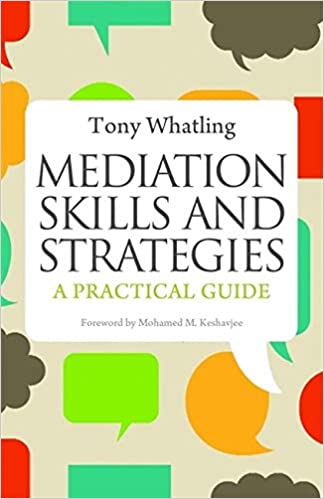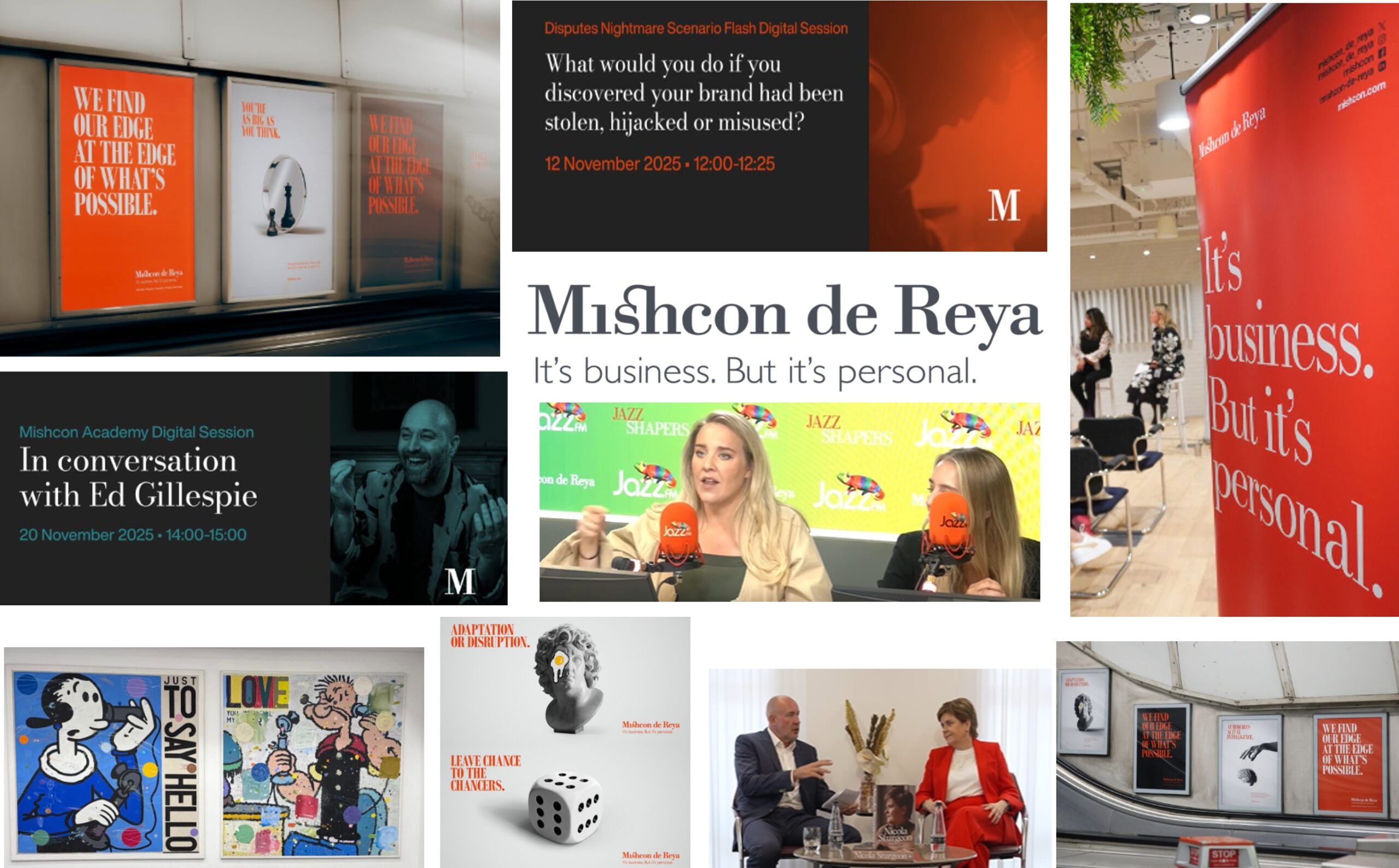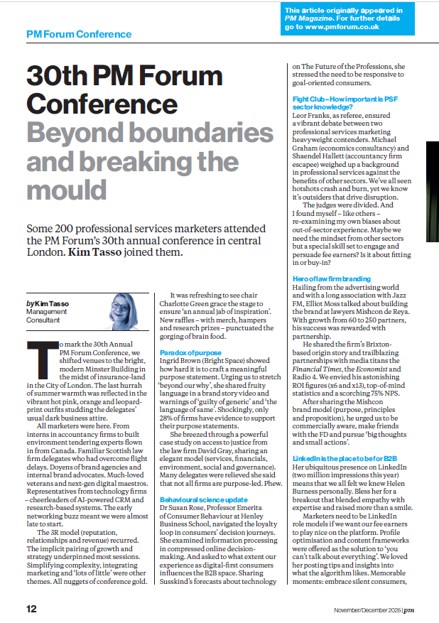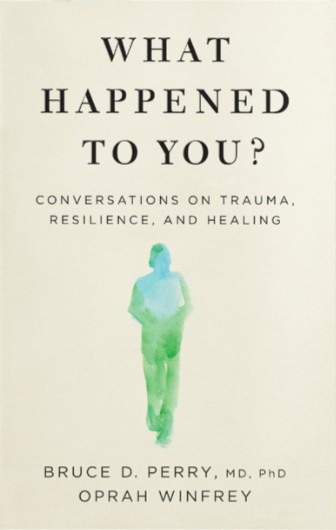
I am often asked which books I recommend on mediation even though there are plenty of good books around on the subject. Those of my friend Clive Lewis OBE – who has written 14 books including “How to Master Workplace and Employment Mediation” (Bloomsbury, 2015) and ”Difficult Conversations – 10 Steps to Becoming a Tackler not a Dodger” (Globis Mediation Group, 2011) https://www.globis.co.uk/ are excellent. But here I’ve reviewed “Mediation skills and strategies – A practical guide” by Tony Whatling (Jessica Kingsley, 2012) which was published in 2012. The author is a lecturer in interpersonal communication and an experienced mediator trainer. It is also a comprehensive introduction to the topic and, as the title suggests, refreshingly practical whether addressing work, business or personal disputes. It also resonates with a lot of the training I did on therapeutic counselling.
Foreword
The foreword by Mohamed M. Keshavjee (a barrister and former member of the World Mediation Forum (WMF)) supports the cross-cultural value of the approach outlined. And explains that the author draws on a number of social science disciplines and critiques the individualistic problem-solving models used in the West.
Introduction
The book offers a straightforward, comprehensive collection of mediator skills and strategies. It is aimed at both trainee and experienced mediators and those in “people working” business such as counsellors, human resource professionals and health care staff.
The author talks about the transitional journey from other types of work to dispute resolution by referring to the work of John Hayne PhD who is a leading authority on ADR (Alternative Dispute Resolution) and family mediation. He explains the past focus of mediation as future-focused and problem-solving (aligned with individualistic Western cultures) and explains the need to also manage emotions from past events.
He ends the introduction with the need for effective mediators to believe that all clients are capable of the 3Rs (Rationality, Reasonableness and Responsibility). He notes that mediation is a publicly accountable activity and has certain practice standards.
Mediation, process and practice
“Mediation is a process in which an impartial third person assists those involved in conflict to communicate effectively with one another and to reach their own agreed and informed decisions concerning some, or all, of the issues in dispute”.
Participation in mediation must be voluntary and people must be free to withdraw at any time. Mediators must remain neutral. Mediators help participants identify and explore the options available. They may offer information – but not advice – on what the parties may wish to explore outside the mediation process.
Mediation is confidential. Mediation must be conducted on a “legally privileged” basis – without prejudice which means disclosures may not be used in subsequent legal proceedings without the consent of both parties.
He quotes Marian Robert’s five stage process (but also mentions Moor’s 12 step process):
- Establish the arena – the first joint session
- Define and clarify the issues – the separate sessions
- Explore the issues – return to the joint meeting
- Development of options
- Securing agreement
There’s an examination of mediator attributes spanning creativity, respected authority, emotional intelligence, endurance and patience. And an overview of historical developments in practice:
- Facilitative mediation – the use of open-ended questions to explore issues, interests and needs – primarily joint meetings sometimes with side meetings (caucuses) and shuttle mediation. It was interesting to note that between three and six sessions were required in family mediation for complex children, financial and property issues to be resolved.
- Evaluative mediation – a process modelled on settlement conferences by highlighting strengths and weaknesses of each parties’ case. Sometimes referred to as normative mediation.
- Directive mediation – sometimes used in major international conflicts. Some lawyers can resolve disputes this way in just one or two sessions by insisting that all financial data is submitted before the first session.
- Transformative mediation – where empowerment and recognition are emphasized so parties express themselves effectively and recognise the reasons for each other’s actions. Developed by Robert Baruch Bush and Joseph Folger.
- Narrative mediation – Developed by Winslade and Monk to recognise that people organise their experiences in story form.
- Non-directive mediation and the client as expert – based on the client-centred Humanistic counselling therapy model developed by Carl Rogers. The principles being: open interest, non-judgemental, non-directive, genuine intention to understand and constant effort to remain objective (Muchielle).
There are further references to counselling psychology with a mention of Thomas Harris’s book “I’m OK, You’re OK” and its links to Transactional Analysis (TA).
Language and diversity
The KIS (Keep It Simple) concept starts this chapter. The suggestion is to ask people what “things” they feel they need to talk about rather than label them as “issues”. There are pointers on communicating with people who are not “neurotypical” (e.g. with Asperger’s Syndrome).
There’s an examination of neurolinguistics and the relationship between language and the brain. (Introductory material on Neuro-linguistic Programming – NLP – may be helpful), Listening skills are mentioned again and the idea of cognitive dissonance (our inability to hold two conflicting ideas simultaneously).
There’s a reminder to replace the use of “but” with “and”.
Stereotypes, cultural intelligence and cultural fluency are explained with the three key elements of attitudes, knowledge and skills. I was pleased to see the differences between mono-chromic and poly-chromic cultures discussed. For introductory material on cross-cultural communication.
There are brief mentions of intergenerational and gender differences.
Listening skills
It’s good to see a whole chapter dedicated to this topic. The value of thinking out loud is highlighted so that you can reconsider and possibly reformulate personal perspectives. The role of Non-Verbal Communication (NVC) is also explored.
The importance of giving your whole and undivided attention at the outset is stressed. There’s an interesting examination of “triggers” where something that is said starts the listener thinking about similar experiences and ideas rather than continue to concentrate on what is being said. There were interesting insights into “time spans of discretion” for role-appropriate differences in how long to listen and affirmative social rituals. There were tips on managing different types of silence as well.
Questioning skills
“Questions are rarely, if ever, neutral or value free” starts this chapter with an analysis of meta-communication. Different types of questions (open-ended, funnelling, negative/positive, circular, strategic, clarifying, information-gathering, hypothetical, challenging, leading, creative, participative, focusing, alternative, give them a clue, closure) are considered with a suggestion to convert “Why” questions into “What” questions.
Summarising and reflecting skills
The need for “periodic stocktaking” or “where are we up to” reviews demonstrates the power of summarising. The author urges mediators not to take notes during the early part of a session (so participants are assured of “free attention”) so summaries serve the mediator as well as the participants. Summaries also demonstrate that the parties have been effectively heard.
The 13 functions of reflection (Hargie, Saunders and Dickson (1994)) are listed and there is an exploration of accuracy checking, controlling the flow, reflecting meaning and content, conveying beneficially neutral information to the other party, marking the transition between stages, redirecting past-negative to future-positive, checking mediator’s hypotheses and opening and closing sessions.
I liked the use of counselling’s congruence – suggesting that the mediator can reflect that “things feel stuck” supported with a summary of the situation. And the use of Outcome Summaries to close sessions.
The material on paraphrasing and reflective responses could have been included in the listening chapter. But I liked the technique “So you feel…because”.
Some more advanced level strategies
Normalising (“mediator normalises the clients’ position, enhancing their belief that they can solve their problem” John Haynes) is examined as a way to take back responsibility for solving problems together. Mutualising creates cognitive dissonance and a recognition that both parties must accept responsibility to change and solve the issue.
One of my favourite techniques “reframing” is explored. before concatenation to link things together.
Managing high conflict and emotion
“Conflict is inevitable” is the first sentence in this chapter. Conflict is defined as “A struggle over values and claims to scarce status, power and resources in which the aims of the opponents are to neutralise, injure of eliminate their rivals” (Coser, 1986) and, my preference: “an expressed struggle between two interdependent parties who perceive incompatible goals, scarce rewards and interference from the other party in achieving it” (Borisof and Victor, 1989)
It touches on our personal “life scripts” about conflict – do we see it as exciting and positive or scary and negative? And its change energy to move from something or somewhere to something or somewhere else. Psychosocial transitions are mentioned in respect of separation and divorce. And touches on the need to move from “controlling” conflict to “managing” conflict.
There’s an interesting reference to adrenaline helping us to stay and fight and noradrenaline to run away. And it indicates that it can take an hour for the impact of these stress hormones to dissipate.
It makes the point that dispute resolution negotiations are less about whether to settle than when, how and on what terms.
The procedures and processes during the pre-referral steps are elements of safe practice as well as managing expectations. Calm and relaxing reception facilities, the need to increase social distance between people and positioning chairs to focus both parties on the mediator. There are pointers on establishing ground rules, gaining client co-operation by understanding their conflict styles and ensuring people’s need to be heard and understood are met.
There is guidance on assessing the constructive versus negative quality of conflict. And mediators are warned against shutting down venting too quickly as it has a cathartic value.
When anger arousal gets to “red alert” level there are suggestions to take a break, see the parties separately, repeat people’s names and asking them to look at you (the mediator). Shuttle mediation is also suggested – where parties remain in separate rooms.
Responding to difficult questions and behaviour
Mediators are urged to avoid labels such as “dirty tricks”. And to avoid thinking in terms of truth or lies but in different perceptions of reality. There’s a helpful list of effective responses to difficult questions including: immediacy, non-judgement, normalise, respect, save face, future-focus, problem solve, positive reframes and managing the process.
Asking for specific examples is another technique or inviting parties to advise you (the mediator) if they perceive you are acting incorrectly. Deflecting personal questions with either requests to help develop understanding or to focus on the parties’ situation,
In the afterword, there is a focus on mediation in cultures different to our own. And I liked the reflective reasoning question “What is it about the way I am working that is failing to connect with the world of my client(s)?”
Further reading on mediation skills
The book “Better Business Relationships” explains models of human behaviour – including the Humanist approach of empathy, universal positive regard (UPR) and congruence.
My book “Essential soft skills for lawyers” addresses other soft skills for lawyers and mediators.
There are short videos explaining some key ideas that may help with group dynamics including:
- Emotional intelligence
- Adapting to different personalities
- The Parent Adult Child (PAC) model in Transactional Analysis
- The family therapy Drama triangle
- Building blocks of relationship management
The book by Neil Denny on Conversational Riffs may be of interest to family mediators
This book by Simon Horton may be of interest to those seeking insight into negotiation skills








